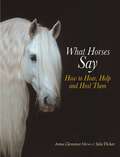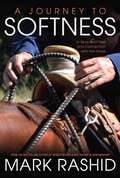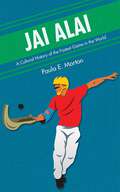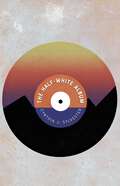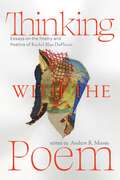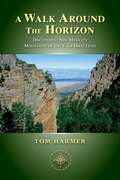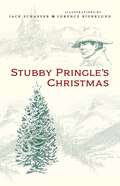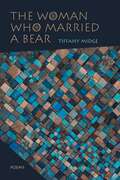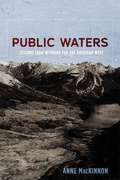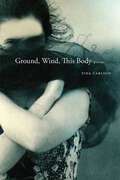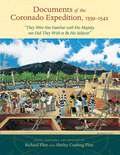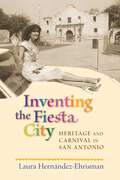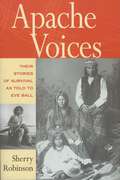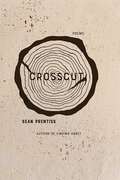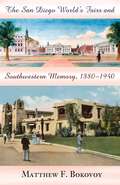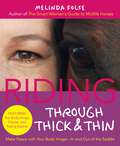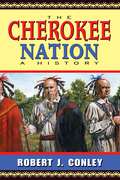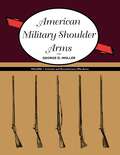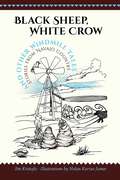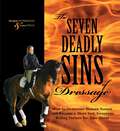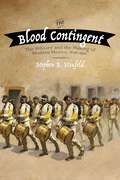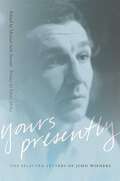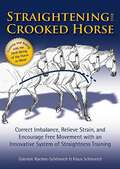- Table View
- List View
What Horses Say
by Anna Clemence Mews Julie DickerAnna Clemence Mews presents a beautifully written collection of true stories that have made up a part of Julie Dicker's career as an animal communicator and healer. Client interviews, case notes, and an interesting collection of survey questions and answers that were actually posed to a representative group of Dicker's equine clientele provide anecdotal evidence of horses' emotions and their ability to reason.
Journey to Softness
by Mark RashidInternationally acclaimed horse trainer Mark Rashid shares and analyzes the remarkable events, quiet moments, and humbling stumbling blocks that-looking back-he can identify as significant in his personal journey to finding softness with both horses and people. Softness, via what many in the horse world today might refer to as feel, begins, Rashid says, with one simple truth: It's not about what we do that starts us on the path to softness, but rather, it's what we don't do. Softness is having the sensitivity we need in order to feel when and if the horse tries to give. It is about developing the kind of awareness and feel it takes to know when we are working against our horses, rather than with them. In these forthright stories, readers get a glimpse of a life that has produced a man known for his ability to solve difficult problems with communication rather than force, as well as methods and techniques gleaned from decades of work with horses, horse people, and martial artists.
Jai Alai: A Cultural History of the Fastest Game in the World
by Paula E. MortonPaula Morton provides a fun, concise introduction to jai alai, a fast-paced ball game with ancient roots that is admired by fans for the sport&’s power and spectacle. Cesta punta, as the game is known in its Basque homeland, became a phenomenon during the twentieth century as organized jai alai spread from Spain into the Caribbean, Latin America, the United States, and Asia. This book outlines the multifaceted history of the sport, from its beginnings in Basque country to its North American &“unveiling&” at the 1904 Louisiana Purchase Centennial Exposition and World&’s Fair and to its rise and fall in popularity in the United States. Guest essays and historic photographs offer extensive insight into the sport&’s fascinating history. Morton further explores the players and venues, providing a carefully crafted and thoroughly researched look into jai alai. Sports lovers and cultural history enthusiasts will marvel at the sport&’s unique history and reach.
The Half-White Album (Lynn and Lynda Miller Southwest Fiction Series)
by Cynthia J. SylvesterThis powerful debut collection explores lives lived between worlds. Sylvester masterfully weaves together fiction, poetry, and nonfiction to give readers a poignant though fractured view of her characters&’ lives, their loves, and their struggles. Told from the perspective of an urban Native, the work details a journey led by the nomadic band, the Covers. It is an experience meant to heal generational trauma and bring back into the light people who may otherwise be forgotten. At its heart, The Half-White Album is a healing ceremony of the author&’s own creation, a process grounded in music that celebrates what it is to be human and imperfect and to love imperfectly.
Thinking with the Poem: Essays on the Poetry and Poetics of Rachel Blau DuPlessis (Recencies Series: Research and Recovery in Twentieth-Century American Poetics)
by Andrew R. MossinBroad-ranging and pluralistically investigative, the essays in Thinking with the Poem document Rachel Blau DuPlessis&’s authorial interventions as a poet, scholar, and cultural critic steeped in the linguistic and political frames of her time. The writers included in this volume engage root-level questions at the heart of DuPlessis&’s praxis as posed by her in a recent essay: &“What is a poem, what is a poet, what is an oeuvre, what is the &‘poetic&’?&” Inventive and noncanonical, these essays offer substantive responses to these and other questions, providing new routes of inquiry into the poetry and poetics of this preeminent figure of new writing.
A Walk Around the Horizon: Discovering New Mexico's Mountains of the Four Directions
by Tom HarmerNorth of Santa Fe, the New Mexico landscape is framed by four high mountains. Although they are sacred to the Tewa Pueblo Indians, the four peaks are in different bureaucratic and cultural zones, which means that each peak attracts visitors but few non-Indian travelers visit more than one of the mountains. Tom Harmer&’s chronicle of climbing all four of these mountains in one summer—Sandia to the south, Chicoma to the west, Canjilon to the north, and Truchas to the east—offers a unique view of a montane forest unlike any in the world, where mountain, plain, and desert biota converge. Outdoor enthusiasts and armchair travelers alike will relish Harmer&’s precise account of his backpacking adventure, in which this sixty-two-year-old Anglo discovers the realities of complicated cultural legacies, ecological challenges, and human foibles counterpoised against his own strengths and frailties.
Stubby Pringle's Christmas
by Jack SchaeferThe spirit of Christmas is contagious and overwhelming in this charming and unpredictable holiday tale. Orphaned at thirteen, the poorly paid, patched-clothed cowhand Stubby Pringle is now nearing twenty as he looks forward to whooping it up at the schoolhouse in the valley for the Christmas dance. His box of chocolates is tucked into his saddlebag for the gal who &“appeals to him most and seems most susceptible.&” But this Christmas Eve Stubby finds that the magic of the season may have something different in store for him. In true Schaefer fashion, Stubby Pringle delights readers and fills our hearts with the magic and spirit of Christmas.
The Woman Who Married a Bear: Poems (Mary Burritt Christiansen Poetry Series)
by Tiffany MidgeWinner of the Kenyon Review Earthworks Prize for Indigenous Poetry, Midge deftly weaves Plains Indian myths into the present day and seeks to define love, the nature of desire, and identity in the twenty-first century. The book includes a series of poems, each titled &“Considering Wakatanka,&” that weave together the themes throughout the book. The Woman Who Married a Bear showcases the wholly individual voice of a talented poet.
Public Waters: Lessons from Wyoming for the American West
by Anne MacKinnonWyoming&’s colorful story of water management illuminates the powerful forces that impact water use in the rural American West. The state&’s rich history of managing this valuable natural resource provides insights and lessons for the twenty-first-century American West as it faces drought and climate change. Public Waters shows how, as popular hopes and dreams meet tough terrain, a central idea that has historically structured water management can guide water policy for Western states today.Drawing on forty years as a journalist with training in water law and economics, Anne MacKinnon paints a lively picture of the arcane twists in the notable record of water law in Wyoming. She maintains that other Western states should examine how local people control water and that states must draw on historical understandings of water as a public resource to find effective approaches to essential water issues in the West.
Ground, Wind, This Body: Poems (Mary Burritt Christiansen Poetry Series)
by Tina CarlsonThis debut collection explores the vestiges of war and the effects those can have on a family. Carlson excavates the personal experience of violence and abuse that follows a traumatized soldier home and also reveals veins of redemption.
Documents of the Coronado Expedition, 1539–1542: They Were Not Familiar with His Majesty, nor Did They Wish to Be His Subjects
by Richard Flint Shirley Cushing FlintThis volume is the first annotated, dual-language edition of thirty-four original documents from the Coronado expedition. Using the latest historical, archaeological, geographical, and linguistic research, historians and paleographers Richard Flint and Shirley Cushing Flint make available accurate transcriptions and modern English translations of the documents, including seven never before published and seven others never before available in English. The volume includes a general introduction and explanatory notes at the beginning of each document.
I Married a Soldier
by Lydia Spencer LaneLydia Spencer Lane's account of her life as a young army bride on the early southwestern frontier is both invaluable history and delightful commentary. As an officer's wife, Lane left her home in Pennsylvania in 1854 to accompany her new husband to his first post in the West--the encampment at Fort Inge, Texas, then in the midst of a yellow-fever epidemic. For the next sixteen years, Lane crossed the Great Plains by wagon seven times, traveled nearly 8,000 miles, raised three children, and became accustomed to tours of duty that required the family to move at least every six months to a different set of military forts, frontier garrisons, and trailside bivouacs across New Mexico and Texas.First published in 1893 and unavailable for nearly a decade, Lane's narrative manifests a dry wit that lends humor to events that range from the uncomfortable to the terrifying. Through her eyes we see the close-knit social life of an army post, the western frontier's divided response to the American Civil War (including the Confederate invasion of the Mesilla Valley), and the cultures and peoples of the West. As Darlis Miller makes clear in her Introduction, Lane's courage, her sense of humor, her powers of observation, and her obvious love for the western landscape make her an unforgettable narrator, a valuable historian, and a bold exemplar of strength under pressure.
Inventing the Fiesta City: Heritage and Carnival in San Antonio
by Laura Hernández-EhrismanFiesta San Antonio began in 1891 and through the twentieth century expanded from a single parade to over two hundred events spanning a ten-day period. Laura Hernández-Ehrisman examines Fiesta's development as part of San Antonio's culture of power relations between men and women, Anglos and Mexicanos.In some ways Fiesta resembles hundreds of urban celebrations across the country, but San Antonio offers a unique fusion of Southern, Western, and Mexican cultures that articulates a distinct community identity. From its beginning as a celebration of a new social order in San Antonio controlled by a German and Anglo elite to the citywide spectacle of today, Hernández-Ehrisman traces the connections between Fiesta and the construction of the city's tourist industry and social change in San Antonio.
Apache Voices: Their Stories of Survival as Told to Eve Ball
by Sherry RobinsonIn the 1940s and 1950s, long before historians fully accepted oral tradition as a source, Eve Ball (1890-1984) was taking down verbatim the accounts of Apache elders who had survived the army's campaigns against them in the last century. These oral histories offer new versions--from Warm Springs, Chiricahua, Mescalero, and Lipan Apache--of events previously known only through descriptions left by non-Indians.A high school and college teacher, Ball moved to Ruidoso, New Mexico, in 1942. Her house on the edge of the Mescalero Apache Reservation was a stopping-off place for Apaches on the dusty walk into town. She quickly realized she was talking to the sons and daughters of Geronimo, Cochise, Victorio, and their warriors. After winning their confidence, Ball would ultimately interview sixty-seven people.Here is the Apache side of the story as told to Eve Ball. Including accounts of Victorio's sister Lozen, a warrior and medicine woman who was the only unmarried woman allowed to ride with the men, as well as unflattering portrayals of Geronimo's actions while under attack, and Mescalero scorn for the horse thief Billy the Kid, this volume represents a significant new source on Apache history and lifeways.Sherry Robinson has resurrected Eve Ball's legacy of preserving Apache oral tradition. Her meticulous presentation of Eve's shorthand notes of her interviews with Apaches unearths a wealth of primary source material that Eve never shared with us. Apache Voices is a must read!--Louis Kraft, author of Gatewood & GeronimoSherry Robinson has painstakingly gathered from Eve Ball's papers many unheard Apache voices, especially those of Apache women. This work is a genuine treasure trove. In the future, no one who writes about the Apaches or the conquest of Apacheria can ignore this collection.--Shirley A. Leckie, author of Angie Debo: Pioneering Historian
Crosscut: Poems (Mary Burritt Christiansen Poetry Series)
by Sean PrentissSean Prentiss takes readers into what it means to be a rookie trail-crew leader guiding a motley collection of at-risk teens for five months of backbreaking work in the Pacific Northwest. It is a world where the sounds of trail tools—Pulaskis, McLeods, and hazel hoes—filter into dreams and set the rhythm of each day. In this memoir-in-poems, Prentiss shares a music most of us will never experience, set to tools swung and sharpened, backdropped by rain and snow and sun, as individuals transform into crew.
The San Diego World's Fairs and Southwestern Memory, 1880-1940
by Matthew F. BokovoyIn the American Southwest, no two events shaped modern Spanish heritage more profoundly than the San Diego Expositions of 1915-16 and 1935-36. Both San Diego fairs displayed a portrait of the Southwest and its peoples for the American public. The Panama-California Exposition of 1915-16 celebrated Southwestern pluralism and gave rise to future promotional events including the Long Beach Pacific Southwest Exposition of 1928, the Santa Fe Fiesta of the 1920s, and John Steven McGroarty's The Mission Play. The California-Pacific International Exposition of 1935-36 promoted the Pacific Slope and the consumer-oriented society in the making during the 1930s. These San Diego fairs distributed national images of southern California and the Southwest unsurpassed in the early twentieth century.By examining architecture and landscape, American Indian shows, civic pageants, tourist imagery, and the production of history for celebration and exhibition at each fair, Matthew Bokovoy peels back the rhetoric of romance and reveals the legacies of the San Diego World's Fairs to reimagine the Indian and Hispanic Southwest. In tracing how the two fairs reflected civic conflict over an invented San Diego culture, Bokovoy explains the emergence of a myth in which the city embraced and incorporated native peoples, Hispanics, and Anglo settlers to benefit its modern development.
Riding Through Thick and Thin
by Melinda FolseMany if not most women have been locked in a battle with their bodies for as long as they can remember. And when it comes to riding horses, they drag their arsenal of self-doubt with them every time they step into the saddle. Some quit riding completely. Others ride, but are frustrated by their lack of progress as riders or what they see as poor performance. They succumb to silent self-torment as they wonder how they look, what others think, and whether they have any business on the back of a horse if their jeans feel a little too tight.Regardless of seat size, riding discipline, or the degree—or even truth—of the body issues with which they struggle, the scars on female self-image in our society run deep and wide. So with the humor and big-sisterly swagger that readers and reviewers have come to love, Melinda Folse, author of bestsellerThe Smart Woman's Guide to Midlife Horses,has decided to step in with a delightful, insightful, fulfilling new book.Riding Through Thick and Thindelves to the bottom of the issues that have long held women hostage, bringing together experts, research, resources, and stories to encourage, inspire, and empower. Readers will find some answers that may surprise them: Believe it or not, this is not about losing weight or getting fit (although if that's a point of interest, there's a section packed with helpful tools and ideas). This book is more about what's going on in every woman's mind—and it taps new findings in neuroscience to reveal that permanent change to deeply ingrained body image issues is not only possible, but it may be much easier than we think.
The Migrant Project: Contemporary California Farm Workers
by Rick NahmiasThe images in this book highlight the lives of the men and women who struggle to exist while literally feeding this country. Countless words and studies over decades bemoan the plight of those who toil in the fields, but Rick Nahmias's pictures bring farm workers to us in an unforgettable way, taking us beyond stoop labor stills and into their intimate moments and inner lives. Having traveled over four thousand miles to document California's migrant workforce, Nahmias's soulful images and incisive text go beyond one state's issues, illuminating the bigger story about the human cost of feeding America. The Migrant Project includes the images and text of the traveling exhibition of the same name, along with numerous outtakes and an in-depth preface by Nahmias. Accompanied by a Foreword from United Farm Worker co-creator Dolores Huerta, essays by top farm worker advocates, and oral histories from farm workers themselves, this volume should find itself at home in the hands of everyone from the student and teacher, to the activist, the photography enthusiast, and the consumer.Every day in the hot fields of California, hundreds of thousands of farmworkers toil for long hours at low pay to provide fruit and vegetables to feed our nation. Most Americans never see the faces of these hard-working men and women, and know little or nothing about the harsh conditions they endure. The Migrant Project has done an extraordinary job documenting these workers' lives. Rick Nahmias's powerful photographs and the beautiful essays of dedicated advocates tell an inspiring story of the farmworkers' historic struggle for the respect, the dignity, and the justice they so obviously deserve.--U.S. Senator Edward M. Kennedy, Massachusetts Nahmias's images starkly capture both the humanity of the farm workers who literally feed our country, and the inhumanity of a system which has kept them and their predecessors prisoners to poverty for decades. This book is a testament to the flesh-and-blood cost of feeding America.--Arianna Huffington, author, editor-in-chief of The Huffington Post, and nationally syndicated columnistUniversity of New Mexico Press gratefully acknowledges the generous contribution of the Columbia Foundation toward the publication of this book.
The Cherokee Nation: A History
by Robert J. ConleyThe Cherokee Nation is one of the largest and most important of all the American Indian tribes. The first history of the Cherokees to appear in over four decades, this is also the first to be endorsed by the tribe and the first to be written by a Cherokee.Robert Conley begins his survey with Cherokee origin myths and legends. He then explores their relations with neighboring Indian groups and European missionaries and settlers. He traces their forced migrations west, relates their participations on both sides of the Civil War and the wars of the twentieth century, and concludes with an examination of Cherokee life today.Conley provides analyses for general readers of all ages to learn the significance of tribal lore and Cherokee tribal law. Following the history is a listing of the Principal Chiefs of the Cherokees with a brief biography of each and separate listings of the chiefs of the Eastern Cherokees and the Western Cherokees. For those who want to know more about Cherokee heritage and history, Conley offers additional reading lists at the end of each chapter.
American Military Shoulder Arms, Volume I: Colonial and Revolutionary War Arms
by George D. MollerAmerican Military Shoulder Arms, Volume I: Colonial and Revolutionary War Arms focuses on the arms used from the early exploratory period throughout the colonial period and the American Revolution. Arranged chronologically, it contains definitive descriptions of the pre-flintlock and flintlock shoulder arms used in North America and detailed accounts of the development and progression of military regulation shoulder arms of the major colonial powers from the early eighteenth century through the Revolutionary War. Lavishly illustrated with more than four hundred vivid photographs of muskets, rifles, carbines, and other arms, this book offers an intelligent analysis of the shoulder arms procured and used by the colonists, colonial and state governments, and the Continental Congress.
Black Sheep, White Crow and Other Windmill Tales: Stories from Navajo Country
by Jim KristoficWhen Kameron moves to his grandma&’s sheep camp on the Navajo Reservation, he leaves behind his cell phone reception and his friends. The young boy&’s world becomes even stranger when Kameron takes the sheep out to the local windmill and meets an old storyteller. As the seasons turn, the old man weaves eight tales that teach the deeper story of the Diné country and the Diné people.
Seven Deadly Sins of Dressage
by Douglas PuterbaughLike the classic deadly sins, the seven deadly sins of dressage presented in this innovative guide-ignorance, timidity, pride, fear, gluttony, impatience, and sloth-wreak havoc on both rider and equine development and training. Calling attention to common mistakes and offering new strategies for avoiding age-old pitfalls, this manual addresses the philosophical issues of incorrect dressage training by examining each vice in depth. Using a touch of humor and sound advice, this guide comes complete with practical exercises, enlightening photographs, and useful information for becoming a better rider and person--
The Blood Contingent: The Military and the Making of Modern Mexico, 1876–1911
by Stephen B. NeufeldThis innovative social and cultural history explores the daily lives of the lowest echelons in president Porfirio Díaz&’s army through the decades leading up to the 1910 Revolution. The author shows how life in the barracks—not just combat and drill but also leisure, vice, and intimacy—reveals the basic power relations that made Mexico into a modern society. The Porfirian regime sought to control and direct violence, to impose scientific hygiene and patriotic zeal, and to build an army to rival that of the European powers. The barracks community enacted these objectives in times of war or peace, but never perfectly, and never as expected. The fault lines within the process of creating the ideal army echoed the challenges of constructing an ideal society. This insightful history of life, love, and war in turn-of-the-century Mexico sheds useful light on the troubled state of the Mexican military more than a century later.
Yours Presently: The Selected Letters of John Wieners (Recencies Series: Research and Recovery in Twentieth-Century American Poetics)
by Michael Seth StewartBoston born and bred, John Wieners was a queer self-styled poète maudit who was renowned among his contemporaries but ignored by mainstream critics. Twenty-first-century readers are correcting this elision, placing Wieners back alongside his better-known peers, including Allen Ginsberg, Charles Olson, Denise Levertov, and Amiri Baraka. Wieners was a voluble letter writer, maintaining friendships with these contemporaries that spanned decades and tackling a range of complex issues that resonate today, including drug use, homosexuality, subcultures of the East and West Coasts, and the differing treatment of mental patients based on their economic class. The letters collected in this volume are greatly enhanced by Eileen Myles&’s preface and Stewart&’s thorough introduction, notes, and brief bios of the poets, writers, artists, and editors with whom Wieners corresponded. The result is more than the letters of a poet—it is a history that explores the world at large in the mid-twentieth century.
Straightening the Crooked Horse
by Gabriele Rachen-SchoneichIt is well known that the horse naturally carries more weight on his forehand than on his hindquarters. This forward center of gravity, combined with an often unrecognized, inborn crookedness from poll to tail, can greatly inhibit training and ultimately affect the horse&’s physical soundness and willingness to perform. In fact, Gabriele Rachen-Schoneich and Klaus Schoneich attribute 95 percent of all locomotive problems, in both sport and leisure horses, to this inherent crookedness.For over 25 years, Rachen-Schoneich and Schoneich—along with expert riders, trainers, veterinarians, and other specialists—have concentrated specifically on this theory at their international training center in Germany. There they have worked with—and successfully &“cured&” through appropriate gymnastic training—more than 4,000 horses with straightness problems related to: incorrect or insufficient training; bad riding; veterinary misdiagnosis; poorly fit tack and equipment, and other causes.Now, the couple describe their techniques, not only for addressing the symptoms of crookedness in an already schooled horse, but also for dealing with the &“innate problem&” in unbroken youngsters. Readers learn how using groundwork with green horses can &“straighten&” them and increase their &“carrying power&” before they are backed. You'll see how, with sufficient attention to gymnastic training on the longe and in hand, the eventual transition to work under saddle can be handled smoothly, easily, and without ever sacrificing correct locomotion.
